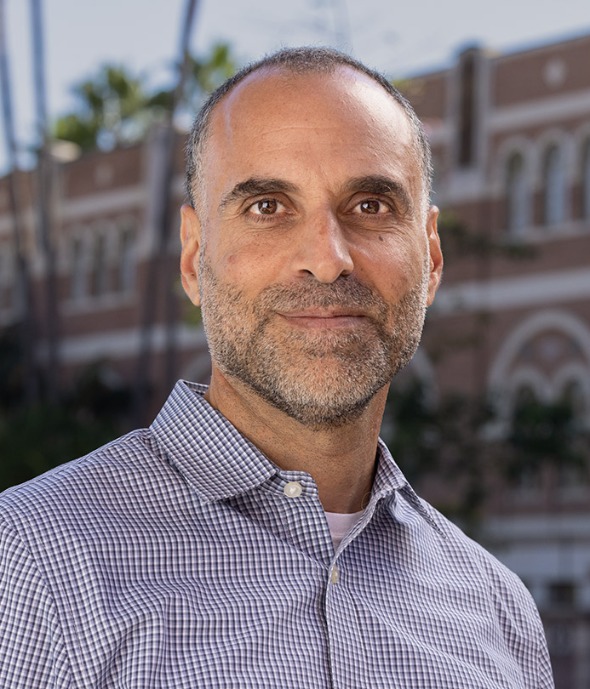Bridging Quantitative and Qualitative
Content analysis is valuable in organizational research because it allows researchers to recover and examine the nuances of organizational behaviors, stakeholder perceptions, and societal trends. It is also an important bridge between purely quantitative and purely qualitative research methods.
In one regard, content analysis allows researchers to analyze socio-cognitive and perceptual constructs that are difficult to study via traditional quantitative archival methods. At the same time, it allows researchers to gather large samples that may be difficult to employ in purely qualitative studies.
Overcoming Challenges
Although content analysis is increasingly used by management researchers as a tool to analyze text and qualitative data, many researchers are unfamiliar with the various content analysis techniques and how to deal with challenges inherent in its application.
These challenges include finding adequate measures, developing proxy dictionaries and coding schemes, working with texts from various sources, ensuring reliability and validity, and conducting manual versus computer-aided content analysis.
Quotes
“Content analysis is a class of research methods at the intersection of the qualitative and quantitative traditions. It is promising for rigorous exploration of many important but difficult-to-study issues of interest to organizational researchers in areas as diverse as business policy and strategy, managerial and organizational cognition, organizational behavior, human resources, social-issues management, technology and innovation management, international management, and organizational theory.”
from Duriau, Reger, & Pfarrer, 2007. A Content Analysis of the Content Analysis Literature in Organization Studies: Research Themes, Data Sources, and Methodological Refinements. Organization Research Methods, 10: 5–34.
“Our use of advanced content analysis techniques to code affective content of articles and blog posts continues to extend recent organizational research on social perceptions management that recognizes the importance of trying to open the ‘black box’ that is often present in strategy research.”
from Zavyalova, Pfarrer, Reger, & Shapiro, 2012. Managing the Message: The Effects of Firm Actions and Industry Spillovers on Media Coverage Subsequent to Wrongdoing. Academy of Management Journal.
“Content analysis techniques can help bridge the gap between large-sample archival research, which may suffer from internal validity issues, and small sample research, which allows for the collection of primary data and in-depth analyses but may suffer from external validity problems. Analyzing the content of a firm’s press releases, media coverage, or stakeholder blogs can enhance archival research (which has been criticized for failure to provide insight into cognitive processes), while maintaining the advantages of using large samples.”
from Pfarrer, Pollock, & Rindova, 2010.
A Tale of Two Assets: The Effects of Firm Reputation and Celebrity on Earnings Surprises and Investors’ Reactions. Academy of Management Journal, 53: 1131–1152
Researchers

Goce Andrevski
Queen’s University
Andrevski’s research interests include competitive dynamics, strategic entrepreneurship and alliance networks. He uses a content analysis approach to examine competitive aggressiveness and entrepreneurial behavior of firms over time.

Philipp Becker
Utrecht University
Becker combines textual and network analysis to capture managerial mental representations as cognitive maps. His research focuses on CEO cognition and CEO–Board of Directors interplay in the context of CEO attention, corporate political activity, and strategic change.

Mike Bednar
University of Illinois
Bednar’s research focuses on corporate governance and executive leadership. He has used content analysis to measure the tone of media coverage and to examine how the media can serve as a governance mechanism and in some cases, prompt firm action.

Jon Bundy
Arizona State University
Bundy’s research focuses on the social and cognitive forces that shape organizational outcomes and behavior. He uses content analysis to study social evaluations, crisis management, and organizational wrongdoing. His content analysis experience ranges from simple hand-coding to advanced topic modeling and natural language processing.

John Busenbark
University of Notre Dame
Busenbark’s research focuses on corporate governance and applied econometrics. John uses content analysis to capture otherwise immeasurable constructs about the interface of top executives and capital markets, as well as to help advance model specification and reduce estimator inconsistency.

Emily Campion
University of Iowa
Campion uses an array of text-based analyses (e.g., content analysis, natural language processing) in human resource functions including selection and turnover. Her research also demonstrates how to use these analyses in mixed-methods studies on other work-based phenomena (e.g., multiple jobholding, Zoom fatigue) and to improve systematic literature reviews.

Daniel Gamache
University of Georgia
Gamache’s research takes a behavioral approach to studying executive decision-making by examining the influence of executive characteristics, compensation, and social evaluations on strategic decision-making. He uses content analysis to study CEO psychological and cognitive characteristics such as CEO regulatory focus, CEO temporal focus, and other attributes. He has also used content analysis approaches to examine the impact of the media on CEO decision-making and to expand our understanding of firm impression management techniques.

Lorenz Graf-Vlachy
TU Dortmund University
Graf-Vlachy uses qualitative and quantitative content analysis to study executives’ characteristics like CEO cognitive complexity, firm characteristics like cognitive frames and family influence, media coverage and narratives, as well as behavioral patterns such as quality of information disclosure, discursive strategies, and flattery. He has worked with a variety of discursive vehicles, including earnings calls, letters to shareholders, mission statements, newspaper articles, interviews, and online reviews.

Derek Harmon
University of Michigan
Derek Harmon uses a variety of text-based analyses to study the microfoundations of institutions, the persistence of organizational deviance, and the emergence of nascent markets.

Joseph Harrison
University of Tennessee-Knoxville
Harrison uses content analytic techniques to understand behavioral aspects of strategic leadership and corporate governance. Through his research, he has co-developed multiple applications to extract meaning from unstructured data and provide insights related to executive personality and cognition as well as governance structures and outcomes.

Tim Hubbard
University of Notre Dame
Hubbard researches social approval assets, Chief Executive Officers, and boards of directors. He has used a combination of dictionary-based and machine-learning techniques to analyze rhetoric and discourse. His research has analyzed the content of press releases, media coverage, conference calls, Facebook posts, and transcripts from various experiments. His methods have used a combination of R, LIWC, and NVivo.

Steven Hyde
Boise State University
Hyde develops theory-driven machine learning (ML) methods – focusing primarily on AI psychometrics- to enhance understanding of executive decision-making and corporate governance. His recent work including developing a theory-driven approach to measure CEO deception in earnings calls and examining the antecedents and consequences of deceit.

Farhan Iqbal
Indiana University
Iqbal uses content analysis to study stakeholders’ evaluations of firms–particularly those of shareholders, employees, and the media. His work tends to use large corpora of traditional news outlets, social media platforms, and other online third-party platforms to assess how various stakeholders perceive corporate events, including corporate wrongdoing, political lobbying, sustainability, and activism.

Amir Karami
University of Alabama at Birmingham
Karami’s research leverages computational techniques for content analysis, grounded theory, and literature reviews. He has also developed classifiers to categorize content from social media, websites, and research data, supporting various research objectives like public opinion mining.

Jason Kiley
Clemson University
Kiley researches firm perceptions and impression management are related to significant firm outcomes and behaviors. His recent work uses content analysis for event classification, impression management detection, and sentiment analysis.

Paula Kincaid
The University of Texas at Tyler
Kincaid’s research focuses on the persistence of misconduct in organizations and the social and psychological mechanisms that allow it to remain obscure. She examines gaslighting as a strategic interpersonal and organizational behavior, the barriers it creates for whistleblowing, and the ways stakeholders interpret and respond to accusations of misconduct. Drawing on a range of content analysis techniques, her work highlights how narratives are crafted to obscure or reframe wrongdoing, shaping stakeholder perceptions and influencing organizational survival. She has also used content analysis in entrepreneurial contexts, showing how crowdfunding narratives influence investor perceptions and decision-making.

Andreas König
University of Passau
König studies the socio-cognitive effects of top executives’ communication. He uses various approaches of content analysis — from manual coding to deep learning algorithms — to measure concepts such as metaphorical communication, leader humor, cognitive frames, and the favorability of journalists and securities analysts.

Aaron McKenny
University of Central Florida
McKenny is an entrepreneurship and methods scholar focused on the advancement of text analytic methodology in management research. He was the 2020 Sage Publications/Research Methods Division Lawrence R. James Early Career Award recipient and is co-editor of the Organizational Research Methods Feature Topic on text analysis. His research examines the role of language in organizational phenomena and can be found in Journal of Applied Psychology, Journal of Business Venturing, Journal of Management, Organizational Research Methods, among other management and entrepreneurship journals

Vilmos Misangyi
Penn State University
Misangyi researches how managerial and organizational actions influence and are influenced by their external environments. He has used content analysis techniques to examine the effects that charismatic language in organizational discourse (e.g., CEO vision statements in letters to shareholders) has on external organizational participants (e.g., securities analysts).

Abbie Griffith Oliver
University of Virginia
Oliver’s research examines the intersection of corporate governance and social evaluations, with a focus on the socio-cognitive mechanisms that shape strategic decision-making and external perceptions of firms. Her work in content analysis spans a range of methodologies, from dictionary-based text analysis to large language models (LLMs), to capture and analyze psychological constructs in text.

Lingling Pan
University of Pittsburgh
Pan uses content analysis to examine strategic communication by firms and their executives. Her publications have analyzed CEO linguistic attributes, incumbent firms’ framing of their competitive actions, and new ventures’ novelty frames.

Mike Pfarrer
University of Georgia
Pfarrer uses content analysis to examine external perceptions of firm actions related to reputation, celebrity, and crisis management. His research has analyzed traditional and web-based media accounts of stakeholders’ reactions to earnings surprises and product recalls.

Tim Pollock
University of Tennessee
Pollock uses content analysis to investigate the social construction of markets and the media’s impact on public impressions of the firm. Specifically, he has analyzed CEO celebrity, earnings surprises, and the role of market ”experts” in shaping impressions about IPO performance and survival.

Rhonda Reger
University of North Texas
Reger uses content analysis to examine external perceptions of firm actions related to reputation dynamics. Along with Vincent Duriau and Michael Pfarrer, her paper exploring the uses of content analysis in management research won the 2007 best publication award from Organizational Research Methods. She first used content analysis in 1993 (with Marjorie Lyles) to study upward influence in joint ventures. Her recent research analyzes traditional and web-based media accounts of stakeholders’ reactions to product recalls and alternative energy.

Hani Safadi
University of Georgia
Safadi uses computationally intensive methods to analyze complex quantitative and qualitative data. He has applied these methods to study online communities, social media, and the development of information systems.

Jeremy Short
University of North Texas
Short’s research focuses on multilevel determinants of firm performance, strategic decision processes, entrepreneurship, research methods, franchising and family business.

Stephen Smulowitz
Wake Forest University
Smulowitz uses content analysis to examine corporate governance and ethical communications, with particular attention to the gap between stated values and actual behavior. His recent research has analyzed corporate disclosures and CEO communications to assess the authenticity of ethical language and the influence of managerial short-termism on firm performance.

Ruixiang Song
University of Tennessee-Knoxville
Song’s research examines how organizations and leaders navigate critical events and how their strategic decisions during these moments shape firm outcomes. He uses content analysis to decode executive communication patterns, including behavioral cues, impression management tactics, and crisis response strategies. His works examine textual data from earnings calls, regulatory filings, and executives’ social media communications.

Hovig Tchalian
University of Southern California
Tchalian uses computational text analysis to study how the social conversation around new technologies impacts processes of market emergence. His research focuses on nascent and specialty contexts such as electric vehicles and third-wave coffee, where the socio-cultural meaning of markets is especially prominent.

Xinran Wang
City University of New York
Wang employs content analyses to explore social issues, disruptive technologies, and digitalization. She uses large-scale, complex, and unstructured data from online platforms and narratives to investigate how firms and technologies navigate and adapt to dynamic environments.

Elle Hyunjung Yoon
Iowa State University
Yoon uses content analysis to investigate impression management and the social evaluations of firms and individuals. Her recent research examines how CEOs are portrayed in corporate communications and the consequences of these portrayals. Additionally, she explores the antecedents and consequences of celebrity director appointments, leveraging content analysis to gain deeper insights into this phenomenon.

Miles Zachary
Auburn University
Zachary uses content analysis to investigate social and cognitive aspects of organizations that affect strategic behavior, stakeholder relationships, and performance. Specifically, he is interested in how firms and stakeholders communicate with each other and how such communications affect independent and relational outcomes.

Anastasiya Zavyalova
Rice University
Zavyalova uses content analysis to study management of social approval assets, such as reputation and celebrity. She specifically focuses on the process of social perception management after wrongdoing. In a recent paper published in the Academy of Management Journal, Zavyalova employed manual and computer-assisted content analysis techniques in the context of product recalls.
